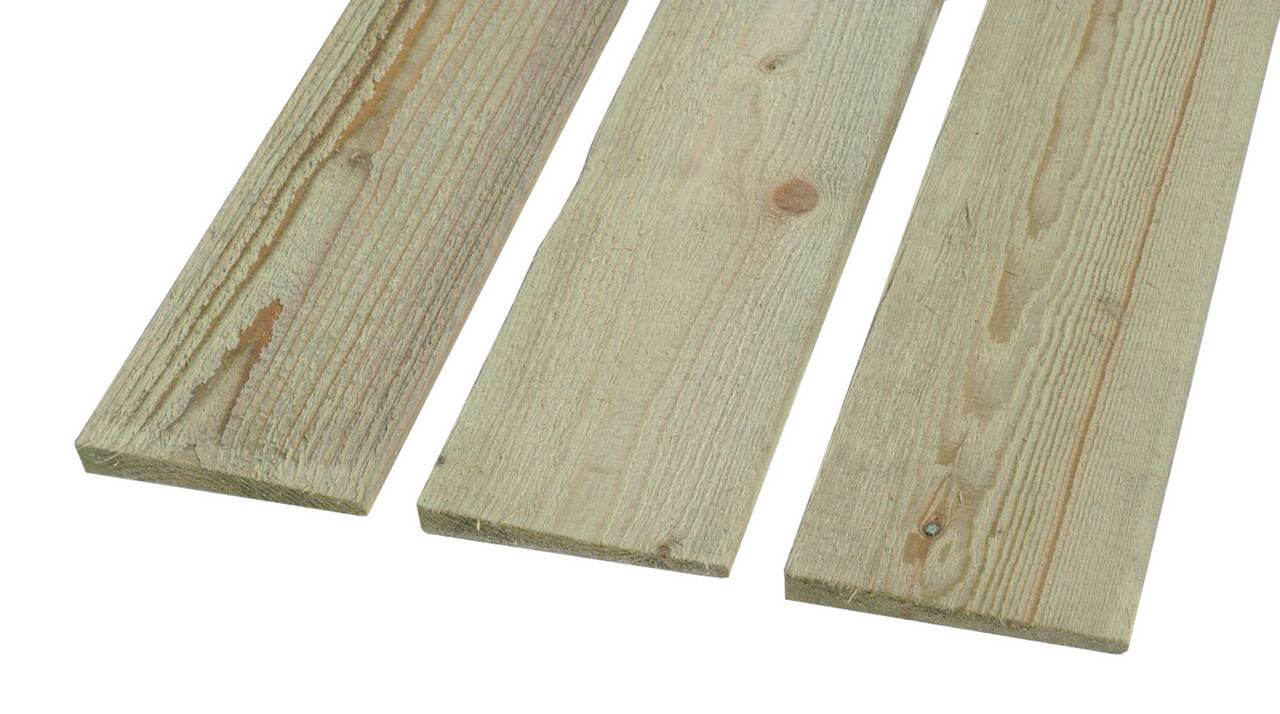07/04/2025 12:00 AM
When buying timber, especially sawn timber, you may see the term EX with dimensions.
If you’re unfamiliar with the term, it’s ok because it is industry jargon but understanding the meaning is essential for both professionals and end customers looking to purchase sawn timber.

This is particularly important when working on projects like fencing or producing feather edge boards.
Here’s a breakdown of what "EX" means, how it’s used in timber measurements, and why it’s crucial for timber-related projects.
What Does "EX" Mean?
"EX" stands for "ex sawn size," referring to the dimensions of a timber piece before any processing takes place. Essentially, it’s the original dimensions of the timber before it undergoes milling or shaping. For example, if a decking board is labelled as ‘EX 25mm x 100mm’, it means the timber initially had those rough sawn dimensions before being planed. We prioritise transparency, so on our decking board page, we specify that boards are planed from 100mm x 25mm sections, resulting in a finished size of approximately 95mm x 21mm.

This term is widely used in the timber industry to provide clarity regarding the initial measurements of a piece of wood. Knowing the EX size helps in accurate material estimation and ensures better planning for projects.
It can become more complex than the previous decking board example. For instance, if a Featherboard fence pale is marked as 125mm x 22mm 2EX, it means the timber initially had those rough sawn dimensions before being diagonally cut into two pieces or pales.
How "EX" Applies to Fencing and Feather Edge Boards
In fencing and feather edge board production, the term "EX" is especially relevant. Feather edge boards are crafted by splitting a single rough sawn timber piece into smaller, tapered pales.
What does tapered mean?
Taper or tapered simply means diminished or reduction in thickness towards one end.

For example, if a featheredge pale is described as 100mm x 22mm 2EX feather edge:
The original piece of timber measured 100mm wide and 22mm thick.
"2EX" indicates that this board was divided into two separate feather edge boards.
The resulting boards have a finished thickness of about 14mm at the thickest end, tapering down to approximately 8mm.
This method optimises material usage while maintaining the necessary strength for fencing applications.
Why Knowing EX Sizes Is Essential
Being aware of EX dimensions is important because some timber is lost in the cutting and machining process. When wood is sawn into smaller sections, a portion of the material becomes waste. Understanding EX sizing allows you to plan better and manage resources efficiently.
For example, in the 100mm x 22mm 2EX scenario, only about half of the original width remains usable after splitting. By factoring in EX sizes, you can ensure that you purchase the right amount of rough sawn timber, avoiding shortages or excess waste.
Other Uses of EX Timber
While fencing and feather edge boards are common applications, EX timber is used in a variety of other areas. The EX dimension system helps describe the original size of timber before it is processed into different products, such as:
Structural Timber: Large rough sawn pieces are resized for framing and construction.
Cladding: Many exterior timber cladding products start from EX-sized boards.
Landscaping: Sleepers and garden structures are often cut from timber with known EX dimensions.
For instance, a 150mm x 50mm EX rough sawn board might later be machined into a sleeper or a structural support. Understanding the EX measurement lets you know what the original timber size was before additional processing.

Though "EX" is just a short abbreviation, it holds significant importance in the timber industry. Whether you're working with fencing materials, cladding, or landscaping timber, knowing EX sizing gives you a better understanding of what you’re purchasing and how much usable wood you’ll have after machining.
Whether you’re planning a large fencing project or a small DIY timber build, interpreting EX timber sizes correctly ensures efficient planning and cost-effective material usage. Always confirm EX sizing with your timber supplier to ensure you get the right amount of material for your specific needs. With this knowledge, you can confidently select and work with timber for any project.